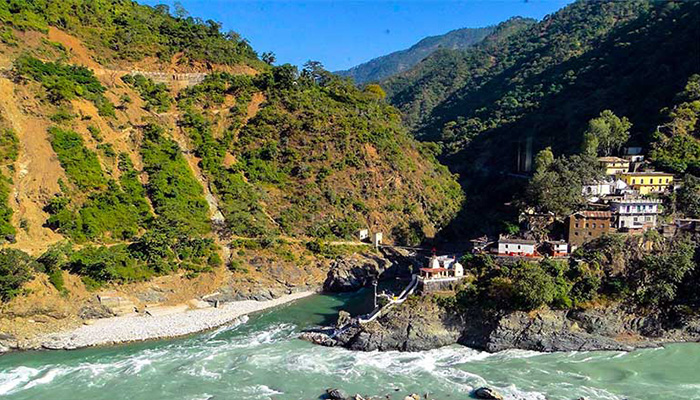Rudraprayag is not just a town; it is a living hymn to the Himalayas and the sacred rivers of India. Situated in the Garhwal region of Uttarakhand, Rudraprayag is one of the Panch Prayag, the five holy river confluences where mighty streams meet before merging into the eternal Ganga. At Rudraprayag, the Alaknanda River unites with the Mandakini River, creating an awe-inspiring spectacle that has been celebrated in myths, scriptures, and pilgrim journeys for centuries in Rudraprayag Uttarakhand.
More than a geographical confluence, Rudraprayag is an experience where spirituality, mythology, and natural beauty come together. Pilgrims on the way to Kedarnath often stop here, while seekers of peace and nature enthusiasts find solace in its serene surroundings.
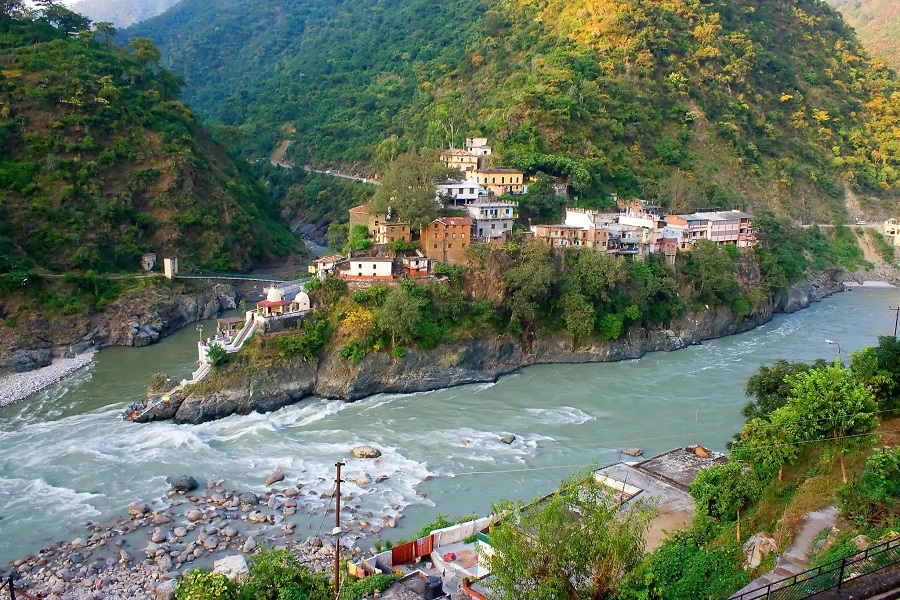
The Spiritual Aura of Rudraprayag
Rudraprayag derives its name from Lord Shiva, also known as Rudra, one of the most revered deities in Hinduism. Ancient legends associate this place with Shiva’s manifestation, adding to the sanctity of the land. Devotees believe that bathing in the confluence at Rudraprayag purifies the soul and frees one from karmic debts.
The sound of the rivers merging is not just a natural phenomenon but is often described as a divine symphony, a reminder of how cosmic forces balance destruction and creation. Temples on the riverbanks add further depth to the spiritual experience.
Mythological Significance of Rudraprayag
The Legend of Narada and Lord Shiva
According to ancient texts, Rudraprayag is the site where the sage Narada worshipped Lord Shiva to gain mastery over music. Pleased with his devotion, Shiva appeared in his fierce form as Rudra and blessed Narada with the gift of divine music. This tale highlights the town as a place of learning, devotion, and divine connection.
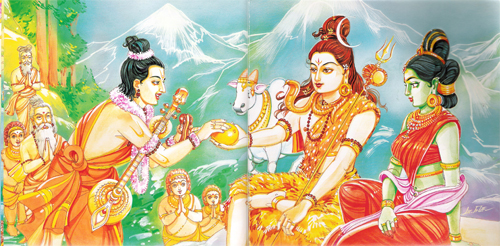
Confluence of Rivers as Cosmic Unity
The meeting of Alaknanda and Mandakini at Rudraprayag is often interpreted as symbolic. Alaknanda represents wisdom and higher knowledge, while Mandakini embodies devotion and purity. Their union symbolizes the balance between intellect and devotion, a teaching embedded in Hindu philosophy.
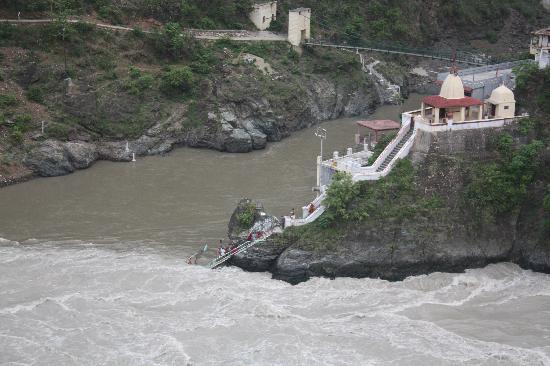
Association with Kedarnath Yatra
Rudraprayag is also mythologically linked with Kedarnath, one of the twelve Jyotirlingas of Shiva. Pilgrims believe stopping at Rudraprayag before proceeding to Kedarnath cleanses the heart and prepares one for receiving Shiva’s blessings.
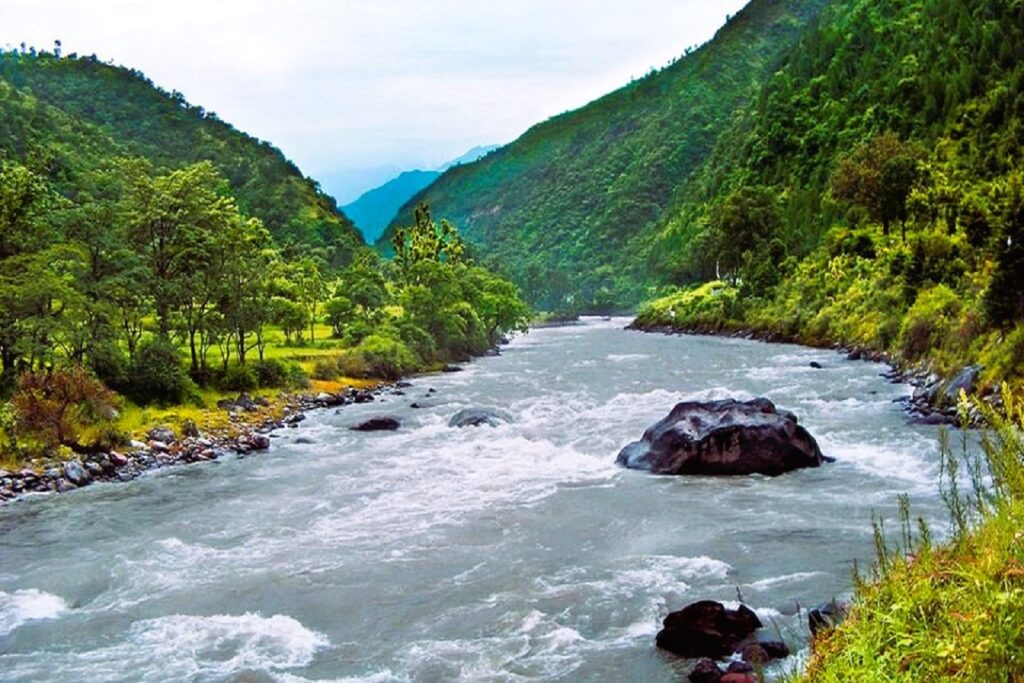
Architecture and Temples of Rudraprayag
Architecture and Temples of Rudraprayag
Rudraprayag, the sacred confluence town where the Alaknanda and Mandakini rivers meet, is more than a geographical wonder. Its essence is carved in stone, echoed in chants, and written in centuries-old traditions. The architecture and temples of Rudraprayag are not just places of worship; they are storytellers of faith, art, mythology, and cultural resilience. Each shrine, cave, and sacred spot tells a tale, and together they weave a tapestry that makes Rudraprayag a living museum of devotion and Himalayan craftsmanship.
Temples as Living Symbols of Rudraprayag
Before exploring specific temples, it is important to understand the spirit in which they were built. Temples here were not constructed to showcase grandeur alone. Instead, they represent a blend of spiritual energy, geographical harmony, and architectural wisdom. Crafted by local artisans, often without modern tools, the shrines reflect how human creativity merges with divine inspiration.
Many temples of Rudraprayag are modest in size compared to monumental shrines like Kedarnath or Badrinath. Yet their simplicity radiates a power that makes devotees bow in reverence. Their architecture follows principles of the Nagara style of North India, with stone-built sanctums, carved pillars, and shikharas (temple towers) rising toward the sky.
Koteshwar Mahadev Temple – A Cave of Mysticism
Location and Structure
Koteshwar Mahadev Temple lies about 3 km from Rudraprayag town, nestled on the banks of the Alaknanda River. Unlike conventional temples, Koteshwar is a cave shrine. The natural rock formations act as both roof and walls, giving the temple an intimate and mysterious aura.
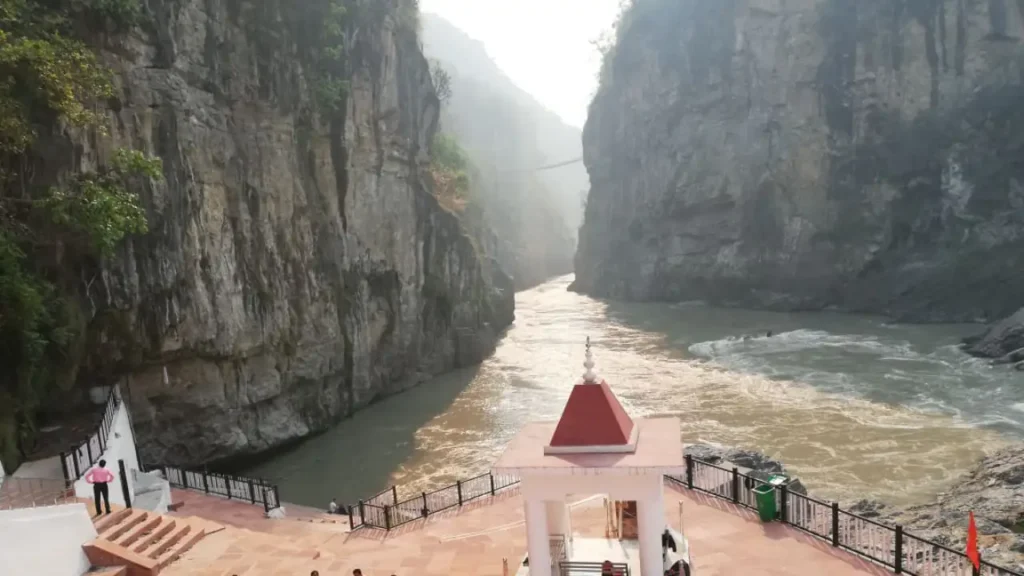
Mythological Importance
It is believed that Lord Shiva meditated here before proceeding to Kedarnath. Local legends say the cave holds echoes of Shiva’s energy, and devotees feel a strong sense of spiritual vibration as they enter.
Architectural Insights
The cave’s natural structure forms the sanctum. Inside, the Shiva Linga rests under dimly lit lamps, surrounded by water droplets seeping from the cave roof, which devotees consider sacred. The absence of elaborate human-made carvings makes this temple stand out as a fusion of natural architecture and divine sanctity.
Rudranath Temple – The Heart of Rudraprayag
Spiritual Significance
The Rudranath Temple gives Rudraprayag its very name. Dedicated to Rudra, a fierce form of Shiva, this shrine has been a spiritual center for centuries. Pilgrims believe that offering prayers here grants strength and removes fear.
Architecture
The temple follows a simple Nagara style, with a square sanctum (garbhagriha), a small mandapa (hall), and a rising shikhara. Carved stones, adorned with floral and geometric patterns, line the walls. What stands out is the stone platform near the confluence, where rituals are performed as the rivers roar in unison.
Atmosphere
Unlike larger, bustling temples, Rudranath Temple is peaceful, allowing one to meditate with the sound of the rivers in the background. The temple is not about visual grandeur but about the raw power of devotion and nature combined.
Chamunda Devi Temple – The Goddess of Protection
Historical Roots
Perched on a hillside near Rudraprayag, the Chamunda Devi Temple is dedicated to Goddess Chamunda, one of the fierce manifestations of Shakti. Legends state that the goddess protects the land from evil and calamities.
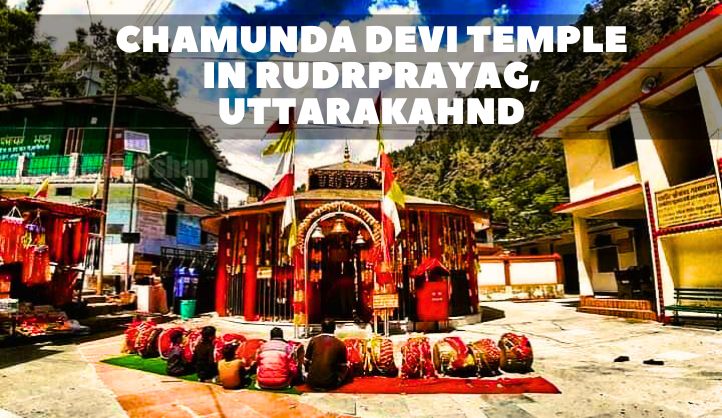
Architectural Features
The temple has a wooden roof with intricately carved beams, a style common in Himalayan hill shrines. The sanctum houses an idol of Chamunda, adorned with red cloth and garlands. Bells of different sizes hang outside, tied by devotees as symbols of fulfilled wishes.
Festivals and Rituals
During Navratri, the temple becomes a hub of devotion, with special pujas, folk dances, and community feasts. The temple thus serves not only as a place of worship but also as a cultural gathering point.
Dhari Devi Temple (Near Rudraprayag)
Though technically closer to Srinagar Garhwal, the Dhari Devi Temple holds spiritual significance for Rudraprayag pilgrims. Dedicated to a guardian goddess, this shrine is often referred to as the protector of the Char Dham.
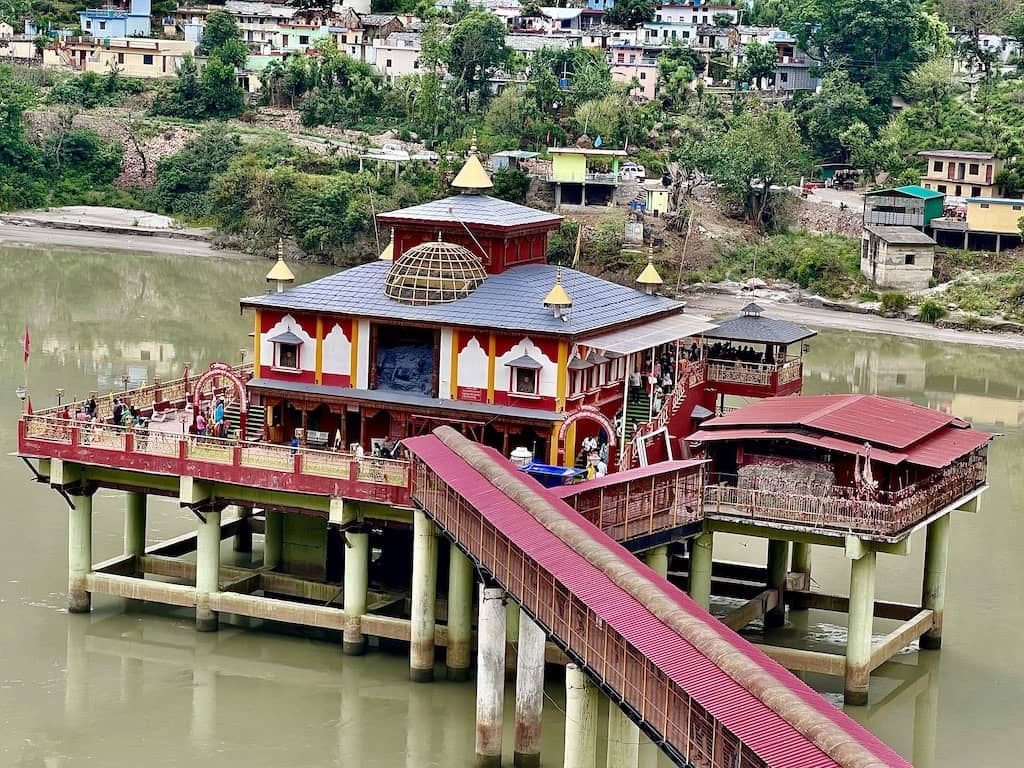
Unique Aspect
The idol of the goddess changes forms three times a day—child in the morning, young woman at noon, and an old woman in the evening. This unique phenomenon makes Dhari Devi one of the most intriguing temples of Uttarakhand.
Architectural Style
Standing on a raised platform amidst the river, the temple appears almost floating during monsoons. The use of local stone and wood in construction showcases the adaptation of architecture to challenging terrains.
Architectural Themes in Rudraprayag’s Temples
1. Use of Natural Elements
Temples like Koteshwar Mahadev embrace caves and natural rock formations as their foundation, blending man-made and natural architecture seamlessly.
2. Stone Carvings and Sculptures
Carvings of deities, floral motifs, and sacred symbols adorn temple walls. These are not just artistic expressions but also coded messages representing cosmic truths.
3. Compact Structures
Unlike massive temple complexes, Rudraprayag’s shrines are smaller, reflecting the humility of Himalayan devotion. The compact designs allow them to withstand harsh climates and earthquakes.
4. Harmony with Landscape
Temples are strategically located—on hills, near rivers, or inside caves—symbolizing the closeness of divinity to natural forces. The architecture itself teaches the philosophy of coexistence.
Lesser-Known Shrines of Rudraprayag
Agastya Muni Temple
Located in Augustmuni, this temple honors sage Agastya, who meditated here. The temple features murals and scriptures describing the sage’s life.
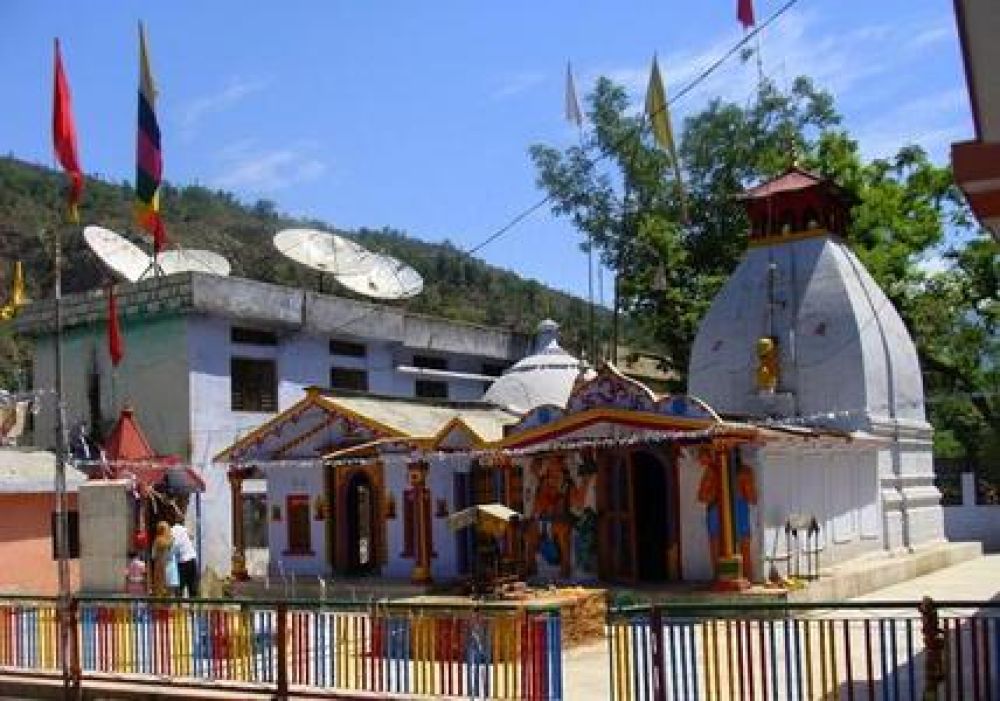
Maa Hariyali Devi Temple
On a hilltop near Rudraprayag, this temple is dedicated to Goddess Hariyali, considered an incarnation of Shakti. The surrounding forests make the temple feel like a natural fortress.
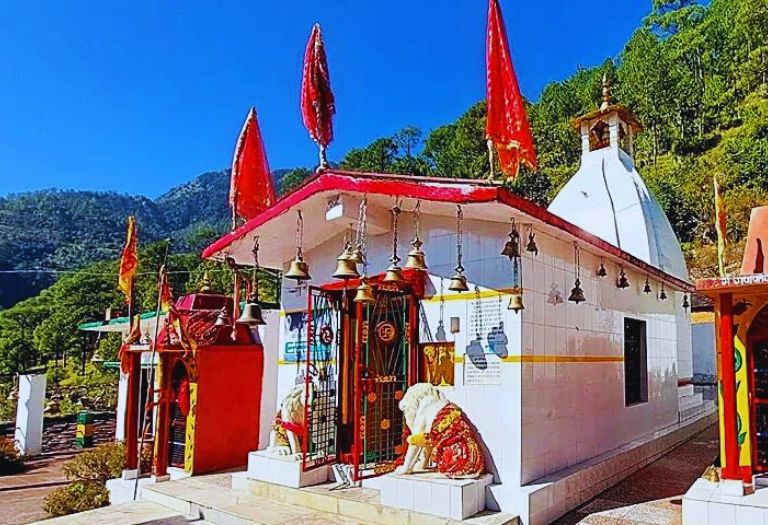
Triyuginarayan Temple
Though slightly farther, this temple is associated with the marriage of Lord Shiva and Parvati. Its eternal fire, believed to have been burning since their wedding, is its biggest attraction.
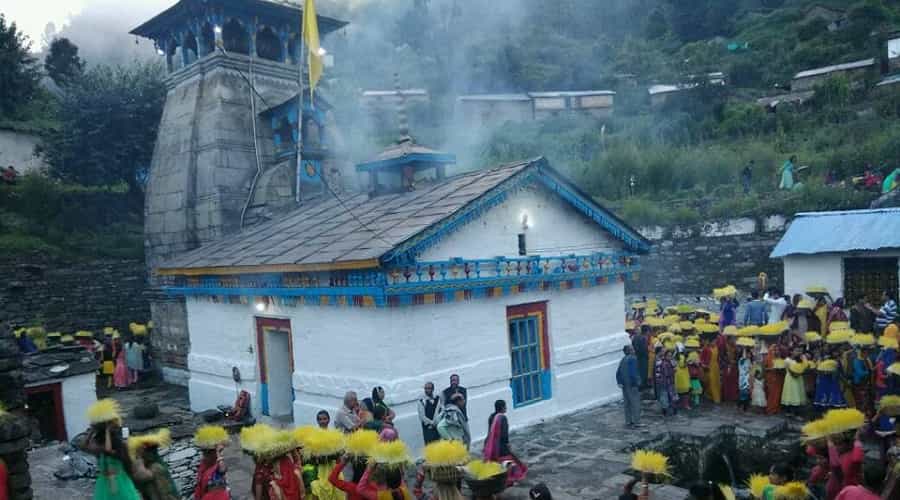
Role of Architecture in Pilgrimage Experience
For a pilgrim, architecture is not just visual. It influences how devotion is experienced.
- The echoes in a cave temple create a meditative environment.
- The height of a shikhara inspires the mind to look upward toward the divine.
- The bells and mandapas encourage collective worship and unity.
Thus, temples here are not just buildings but sacred environments carefully crafted to elevate the human spirit.
The Natural Beauty of Rudraprayag
One of Rudraprayag’s strongest appeals lies in its breathtaking natural beauty. Nestled at the meeting point of two rivers, surrounded by Himalayan ranges, and covered with lush greenery, the town offers mesmerizing views in every direction.
- Riverbanks: The confluence itself is a spectacle worth watching at sunrise or sunset.
- Himalayan Backdrop: Snow-capped peaks are visible during winters and early summers, creating postcard-like views.
- Flora and Fauna: The region is home to diverse plant life and birds, making it a paradise for nature enthusiasts and photographers.
Adventure and Exploration
Beyond its spiritual importance, Rudraprayag is also a hub for trekkers and adventure seekers.
- Trekking Routes: Trails leading towards Kedarnath, Chopta, and Tungnath often pass through Rudraprayag.
- River Rafting: Certain stretches of the Alaknanda are popular for rafting during safe seasons.
- Camping: Riverside camps provide opportunities for stargazing and nature immersion.
This blend of adventure and spirituality makes Rudraprayag an all-round destination.
Nearby Attractions
Rudraprayag is surrounded by towns, temples, and scenic destinations that enhance its appeal.
1. Augustmuni
A small town associated with sage Agastya, who meditated here. It has a revered temple and serves as a base for the Kedarnath Yatra.
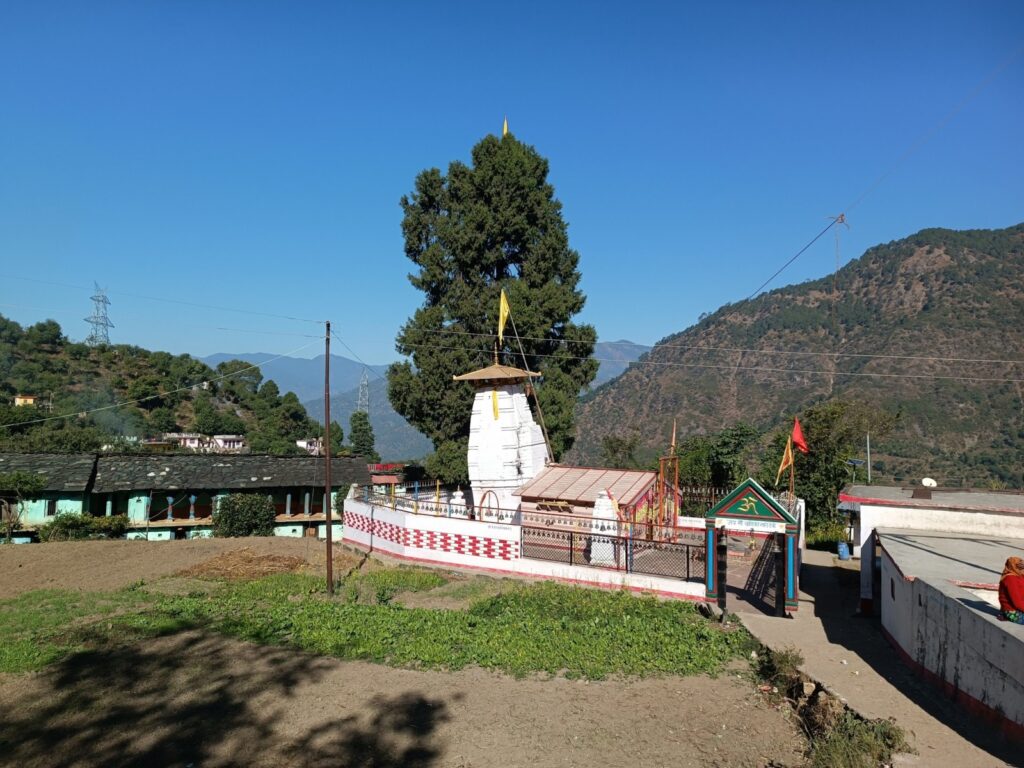
2. Chopta
Known as the “Mini Switzerland of India,” Chopta is a scenic meadow surrounded by forests and mountains. It is also the starting point for the trek to Tungnath Temple, the highest Shiva temple in the world.
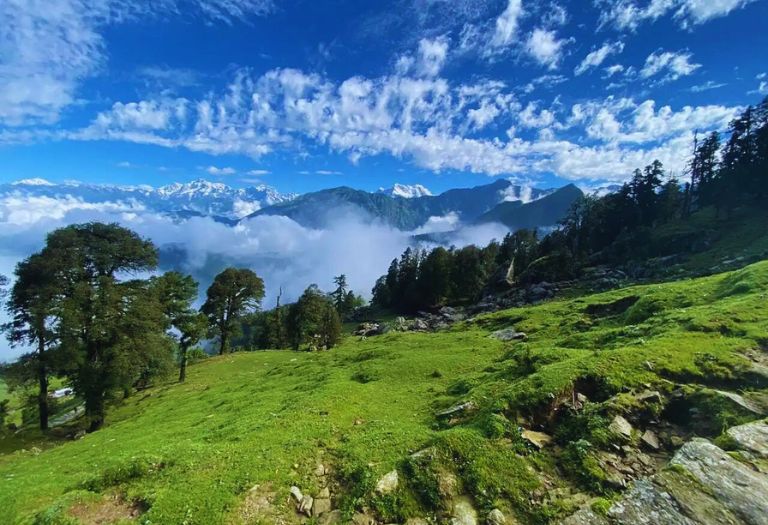
3. Ukhimath
The winter seat of Kedarnath, Ukhimath houses temples where idols from Kedarnath are worshipped during the harsh winter months.

4. Karnaprayag
Another of the Panch Prayag, Karnaprayag lies about 30 km away and is associated with Karna from the Mahabharata.
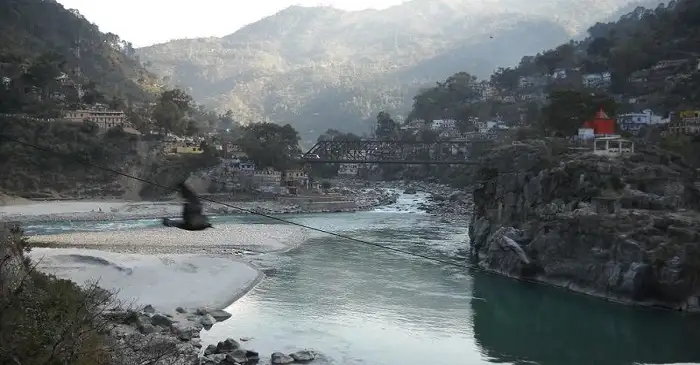
5. Deoria Tal
A high-altitude lake near Rudraprayag, offering stunning reflections of Chaukhamba peaks. It is a favorite destination for trekkers and nature lovers.

Cultural Significance of Rudraprayag
Rudraprayag is not just about temples and rivers; it is a cultural center where traditions, music, and festivals thrive. Local fairs bring together communities, while folk music and dances celebrate the spirit of Garhwal. The confluence town becomes particularly lively during religious occasions like Shivratri and Navratri.
Best Time to Visit Rudraprayag
- Summer (April to June): Pleasant weather, ideal for temple visits and trekking.
- Monsoon (July to September): The rivers are in full flow, but landslides can make travel risky.
- Winter (October to February): Cold but spiritually serene, with snow in higher altitudes.
Pilgrims often prefer summer and early winter, while adventure seekers sometimes come during spring.
How to Reach Rudraprayag
Getting to Rudraprayag is an adventure in itself, as the journey involves breathtaking mountain roads, lush valleys, riverside drives, and glimpses of local culture. Whether you are traveling from nearby cities in Uttarakhand or from distant corners of India, there are multiple routes and transport options available. Below is a detailed travel guide that helps you plan your journey to Rudraprayag efficiently.
Reaching Rudraprayag by Air
Although Rudraprayag does not have its own airport, the nearest air connectivity is provided by Jolly Grant Airport in Dehradun, which is around 155 kilometers away. This airport serves as the main entry point for travelers coming by flight.
Key Details about Air Travel
- Nearest Airport: Jolly Grant Airport, Dehradun
- Distance to Rudraprayag: Approximately 155 km
- Travel Time by Road from Airport: 5–6 hours depending on road conditions
Flight Connectivity
Jolly Grant Airport is well connected to major Indian cities such as Delhi, Mumbai, Lucknow, Kolkata, and Bangalore. Regular flights by airlines like IndiGo, Vistara, and Alliance Air make it convenient for pilgrims and tourists to reach Dehradun before heading to Rudraprayag.
From Airport to Rudraprayag
After landing at Jolly Grant, travelers can opt for:
- Private Taxi – Direct cabs are available outside the airport for Rudraprayag. Though slightly expensive, they offer comfort and flexibility.
- Shared Taxis and Local Transport – For budget travelers, shared jeeps or buses from Rishikesh or Haridwar can be taken after reaching these towns from the airport.
- Pre-booked Vehicles – Many tour operators and hotels offer pre-arranged pickups for a smoother journey.
Reaching Rudraprayag by Rail
The railway route is another reliable option. While Rudraprayag itself does not have a railway station, the closest stations are located in Rishikesh, Haridwar, and Dehradun.
Nearest Railway Stations
- Rishikesh Railway Station (142 km)
- Haridwar Railway Station (165 km)
- Dehradun Railway Station (175 km)
Train Connectivity
Haridwar and Rishikesh are major hubs on the Indian Railway map. Trains from Delhi, Mumbai, Kolkata, Lucknow, and Varanasi regularly arrive here. Rishikesh now has expanded railway connectivity, making it easier for pilgrims traveling towards Char Dham Yatra destinations.
From Railway Station to Rudraprayag
- From Rishikesh, one can take a direct bus, shared jeep, or taxi to Rudraprayag. Travel time is about 5–6 hours.
- From Haridwar, frequent buses and shared taxis are available. The route via Rishikesh makes for a scenic journey along the Ganga.
- From Dehradun, road transport services connect directly or through Haridwar and Rishikesh.
Reaching Rudraprayag by Road
Road travel is the most popular way to reach Rudraprayag, as it provides direct connectivity and the opportunity to enjoy the natural beauty of the Himalayas.
Distances from Major Cities
- Rishikesh to Rudraprayag – 142 km (approx. 5–6 hours)
- Haridwar to Rudraprayag – 165 km (approx. 6–7 hours)
- Dehradun to Rudraprayag – 175 km (approx. 7–8 hours)
- Delhi to Rudraprayag – 370 km (approx. 10–11 hours)
Highways and Routes
- The primary road connecting Rudraprayag is National Highway 7 (NH7), which links Delhi to Badrinath. Rudraprayag lies on this route, making it an essential stop for Char Dham Yatra pilgrims.
- Another important link is through NH 58, connecting Haridwar, Rishikesh, and beyond.
Travel Options by Road
- Private Car or Taxi – Offers flexibility, comfort, and the freedom to stop for scenic views or local food. Ideal for families or groups.
- State Transport Buses – Uttarakhand Transport Corporation (UTC) operates regular bus services from Haridwar, Rishikesh, and Dehradun.
- Private Buses – Various private operators run services from Delhi, Haridwar, and Rishikesh towards Rudraprayag.
- Shared Jeeps – For budget-conscious travelers, shared jeeps are easily available from nearby towns.
Why Rudraprayag is Special
Rudraprayag is not just a stop on the way to Kedarnath. It is a confluence of rivers, legends, and emotions. The town represents the balance between devotion and adventure, between calmness and dynamism. Standing at the Sangam, one feels humbled by the forces of nature and uplifted by the presence of divinity.
For pilgrims, Rudraprayag is a sacred pause. For travelers, it is a breathtaking landscape. For seekers, it is a place of introspection and renewal. Few destinations in India blend spirituality, natural beauty, and mythology as seamlessly as Rudraprayag.
FAQs for Rudraprayag
- Where is Rudraprayag located?
Rudraprayag is in Uttarakhand, at the confluence of the Alaknanda and Mandakini rivers. - Why is Rudraprayag famous?
It is one of the Panch Prayag, revered for its mythological connection with Lord Shiva and its scenic setting. - What does the name Rudraprayag mean?
It means “Confluence of Rudra,” referring to Lord Shiva who is believed to have appeared here. - What rivers meet at Rudraprayag?
The Alaknanda and Mandakini rivers merge at Rudraprayag. - What are the main temples in Rudraprayag?
The Rudranath Temple and Chamunda Devi Temple are among the major shrines here. - What is the best time to visit Rudraprayag?
March to June and September to November offer pleasant weather for spiritual visits and exploration. - How to reach Rudraprayag?
It is well connected by road to Rishikesh, Haridwar, and Srinagar. The nearest railway station is Rishikesh. - Is Rudraprayag part of Panch Prayag?
Yes, Rudraprayag is the second confluence in the Panch Prayag circuit of Uttarakhand. - What myths are associated with Rudraprayag?
Legends say Lord Shiva appeared here to bless Narad Muni, giving the town its name. - What activities can tourists do in Rudraprayag?
Visitors can explore temples, enjoy river views, and use it as a base for treks to Kedarnath and other Himalayan sites.

